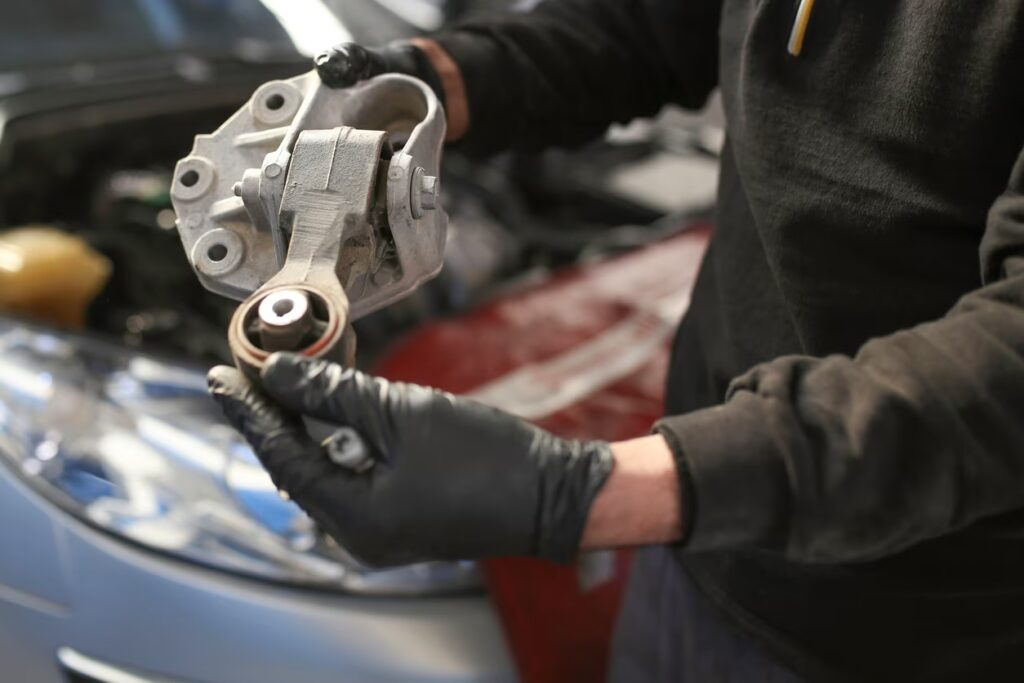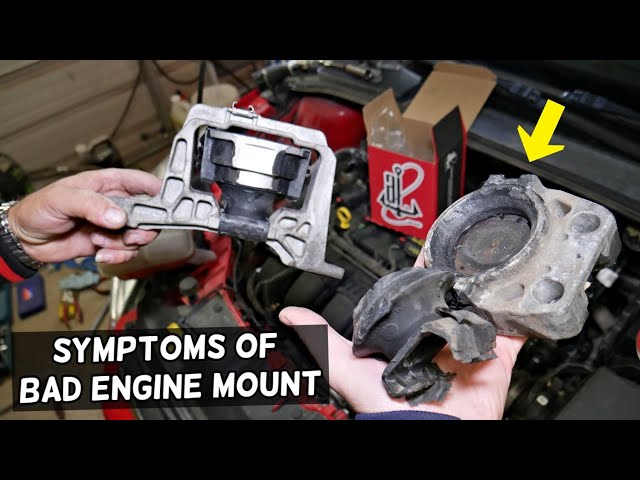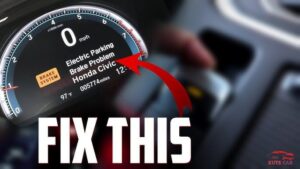Motor mounts interface the motor to the casing or body of the vehicle, giving it backing and making it less noisy. Over the long run, motor mounts can break down and come up short, prompting recognizable side effects. Knowing the indications of awful Engine mount symptoms and getting them supplanted speedily is vital to forestall further harm and guarantee smooth motor activity.
Symptoms of Bad Engine Mounts
Several vital symptoms indicate worn out or broken motor mounts:
- Excessive Engine Vibration – Bad mounts allow more engine movement, increasing vibration, especially at idle. It may be felt inside the cabin or seen as the engine shaking.
- Clunking or Knocking Noises – Harmed mounts can make the motor thump or thumb while beginning from a stop or speeding up. Noise may come from contact between the engine and the frame.
- Engine Movement – Applying gas or brakes results in excessive engine tilt or rise. It is evident with the hood open.
- Oil Leaks – Excessive motion can damage oil seals and lead to leaks at the valve cover, oil pan, and other areas.
- Vehicle Handling Issues – The car may pull, wander, or handle differently with bad mounts due to engine movement altering weight distribution.
These symptoms tend to worsen as the mounts break down further progressively. Addressing them early on can prevent more problems.
Causes of Failed Engine Mounts
There are a few common reasons why engine mounts wear out or fail:
- Age and Mileage – The rubber and materials in mounts naturally deteriorate over time and use. The more seasoned the vehicle and higher the mileage, the more probable the mounts need substitution.
- Oil Contamination – Motor oil or grease can soften and swell the rubber. Little breaks are a typical wellspring of pollution.
- Improper Loading – Frequent hauling or towing places excessive strain on mounts, causing premature cracking and breaking. Extreme engine torque has a similar effect.
- Accidents and Impact Damage – Severe impacts from events like collisions can physically damage mounts. Cracked, bent, or broken mounts may result.
- Design and Quality – Some mounts may need to be better designed or made with subpar materials that fail sooner. The area likewise assumes a part in the quality and life expectancy.

Standard upkeep and investigation are fundamental to guarantee that motor mounts keep going as feasible. However, most will need replacement at some point.
Inspecting Engine Mounts
Some Engine mount symptoms, like vibration, may be apparent during everyday driving. But inspecting mounts directly is needed to confirm the condition. Here are a few inspection tips:
- Check for cracking, splitting, or collapsing in the rubber – this indicates failure.
- Look for signs of oil saturation, which softens the rubber.
- Check bolts and bushings for tightness.
- Have someone watch mounts while the engine is revved – excessive motion denotes terrible mounts.
- Use a pry bar to check for looseness – be careful not to damage the mount.
- Feel for deterioration of rubber with hand pressure.
Issues are only sometimes evident by just looking. Weighting the engine on the mounts makes inspection easier. Safely support the vehicle if you need to inspect mounts with the engine lifted.
Replacing Engine Mounts
When one or more Engine mount symptoms are bad, replacing them promptly is the fix. Waiting risks damage from excessive engine movement. The replacement process involves:
- Raising and safely supporting the vehicle for access to mounts.
- Remove and detach the bad mount from the engine/frame. We may need to remove the brackets.
- Clean mounting surfaces of any grease or oil.
- Install a new or rebuilt mount and reattach all brackets and hardware.
- Lower the vehicle, then check for proper mounting, alignment, and torque on fasteners.
- Road test to verify normal vibration levels and handling.

Many mechanics recommend replacing sets for problematic mounts, especially those that wear at the same rate. Some mounts are more challenging to access. Getting all mounts checked at one time reduces duplicate labor, too. Costs vary, but expect to pay $150-500 or more for repair. Using quality mounts and getting the job done correctly avoids having to do it again soon.
Can Bad Motor Mounts Cause Loss of Power?
Defective Engine mount symptoms can, in some cases, lead to reduced engine power. Here’s how:
- Excessive Movement – Bad mounts allow more engine rocking and twisting. It can adjust drivetrain arrangement and influence choke reaction.
- Vacuum Leaks – Cracked or dried mounts allow air intake leaks. It reduces the necessary vacuum for operation.
- Loose Components – Damage from abnormal engine movement can loosen or disconnect sensors, hoses, wires, and other components related to engine power.
- Engine Strain – Compensating for excessive motion places more mechanical strain on the engine, decreasing optimal performance.
- Drivetrain Wear – Poorly controlled engine movement accelerates the wear of belts, pulleys, and bearings associated with power transmission.
Replacing bad motor mounts is essential for drivability and restoring full engine power delivery. Once mounts are renewed, correct alignment can be reestablished and components secured to ensure proper operation.
Conclusion
Engine mount symptoms have a pivotal capacity in smoothing engine movement. At the point when they break down, it negatively affects the vehicle and your solace. Monitoring side effects like vibration and thumping commotions distinguishes awful mounts early.
Disappointments can be brought about by age, harm, or oil defilement. Inspect and replace damaged mounts before they break to keep the engine secure. Allowing lousy engine mounts to go unchecked will likely cost you power plus lead to other breakdowns. But getting mounts replaced promptly reduces the risks while providing a smoother and more confident ride.
FAQs Regarding Engine Mount Symptoms
Q1: How do I know if my engine mounts are going bad?
The common culprits include excessive vibration, Strange noises, Rough idle, Lurching or jerking, and Visual inspection.
Q2: How can I prevent engine mount issues?
It includes Regular maintenance visual inspections, addressing any symptoms promptly, Avoiding harsh driving conditions, and ensuring your vehicle’s engine.
Q3: How much does it cost to replace engine mounts?
The cost of replacing engine mounts can vary based on the vehicle make and model and ranges from $100 to $500 or more, including parts and labor.
Q4: Can engine mount issues affect vehicle performance?
Yes, faulty engine mounts can impact performance. It includes:
1. Vibrations may cause discomfort
2. Excessive engine movement can affect the alignment o
3. Potentially leading to drivability issues
4. Increased wear on surrounding parts.




